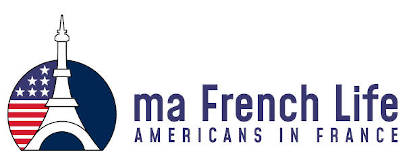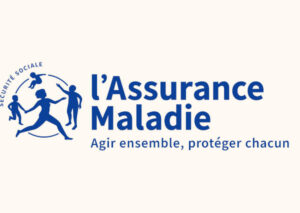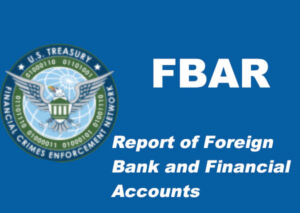This article explains the ins and outs of the French driving test. If you’re looking for practical information about how to register for the French driving test, read Get a French driver’s license in 4 steps.
- How does the French driving test work?
- Part I – French driving test – Written test
- How difficult is le code?
- Take the test as an independent candidate
- Use a driving school
- Take the test in French or with a translator?
- Rules
- Test settings in regular sessions
- Test settings in special sessions
- What if you fail?
- How much does it cost?
- How to practice?
- Free practice tests
- I’m A1 level, can I pass the test?
- Part II – French driving test – Practical exam
- Financial aid
How does the French driving test work?
Like the American driving test, the French driving test is divided in 2 parts.
- a theory written test (“épreuve théorique générale” or ETG) called “code de la route” or “le code” for short
- a practical exam (“épreuve pratique”)
You take the written test first and take the practical exam once you passed the written test.
Both tests can be taken as independent candidate (“candidat libre”) or with a driving school (“auto-école”).
Part I – French driving test – Written test
The first question that comes to mind is how difficult it is to pass the theory test when French is not your first language.
How difficult is le code?
The French written test is challenging, even for French speakers. If you’re not fluent in French, you’ll need to practice a lot before taking the test. Plan ahead and start studying early, before moving to France if it’s an option for you.
Even people who have been driving for decades will probably learn a lot while practicing for the test. The written test is not only about traffic laws. Since 2016, new questions have been added to the test to cover themes related to new technologies (cruise control, GPS…), preserving the environment and first aid basics.
You have a choice to take the written test as an independent candidate or you can enroll with a driving school.
Take the written test as an independent candidate
Taking the written test on your own is totally do-able and it has a few advantages.
- This is cost efficient. Taking the written test is €30.
- There are lots of excellent and inexpensive resources online.
- Paperwork is easy and straightforward, follow the instructions from How to apply for a French driver’s license.
Take the written test with a driving school
You can sign a contract with a driving school which handles the paperwork for you. A driving school is a good option if you’re not sure you’ll practice on your own.
Pass Rousseau is an online platform accessible to students who enroll into a code Rousseau driving school. You get an online practice combined with live courses at the school. Prices vary depending on the school you pick. You can check if there’s a Code Rousseau school near your place.
If you’d like a driving school that caters to English speaking people, try Fehrenbach. Many Americans recommend Fehrenback driving school even though it’s a lot more expensive than a regular French driving school (€1,000 for the written test only!).
With a driving school, this is the instructor who tells you when you’re ready to take the theoretical test.
Take the written test in French or with a translator?
Non-fluent French speakers have the option to attend specific written test sessions (“séances spécifiques” or “séances aménagées”) where they can bring a translator. Theses sessions are for people with hearing or other learning disabilities, as well as people who are not fluent enough in French. Read Attend a special session with a translator for details.
Specific sessions are more difficult to find and you have to pay for your own translator. Some French departments offer no more than one session every couple of months.
If you want to attend special sessions, indicate that your level of French is not sufficient when you apply for a French driver’s license on France Titres – ANTS. Make sure you answer “Non” to the question “le candidat comprend et lit couramment le français” (the candidate understands and reads French fluently).
Taking the written test in French might seem overwhelming at first if your French level is not up to par yet. The good news is that most Americans succeed (not always at the first try though). French vocabulary you learn for the written test will be highly valuable when it’s time to take the driving part of the test.
Written test rules
You need to answer 40 multiple-choice questions. Each question can have from 1 to 4 correct answers. If an answer is partially correct (you checked A instead of A and C for instance), you get zero point for the question. You must have a total of at least 35 correct answers to pass the theory test.

Written test settings in regular sessions
At the French written test, each student is handed a tablet and a headset and gets his own set of questions. Students cannot use their own headset. The tablet is already set up with the student information.
A video is played and you have 20 seconds to answer each question that is read. You pick one or more answers labelled from A to D. You can change your answer during the 20 seconds but you cannot replay the video. To change your answer, click on the red Correction button and then select your new choice. There is no need to validate your answer as it’s automatically validated when the timer expires.
The written test lasts about 30 minutes.
Written test settings in special sessions
In special sessions, non-French speakers can bring a translator. An examiner reads each question and can repeat the question if necessary. After the question is read in French, your translator translates it in English for you.
One big advantage of taking the test with a translator is that the time to answer a question is not limited to 20 seconds.
The drawback of using a translator is the cost and the fact that there are less sessions available compared to taking the regular test in French. If money and time are not a concern, using a translator might be a good option if your French level is still around A1 or A2.
The written test lasts about 1.5 hour in special sessions.
What if you fail the written test?
No worries, you can take le code as many times as you need without any delay between tests. It costs €30 each time you take it.
Don’t despair if you failed. Passing on the first attempt when you’re not fluent in French would be unusual.
How much does the written test cost?
It costs €30 each time you take the test.
How to practice for the written test?
There are many online resources but Ornikar is the best bang for your buck. For €9.99, you have access to 2,500 practice questions as well as online lessons. The price doesn’t include taking the test (€30). Ornikar provides many tests and it’s an excellent way to get ready.
Another excellent resource to practice for le code online is Le permis libre for €19.
Both Ornikar and Le permis libre offer mock tests very similar to the code.
To study offline, get the “Code de la Route” book by Rousseau or purchase an English version from Fehrenbach.
Start practicing with this side-by-side comparison between American road signs and French road signs.
Free practice tests to get you going
If you’re wondering what the written test looks like, practice for free with 40 questions from Le permis libre or these free Q&As from Ornikar. There are also many tests available on youtube. Search for “Code de la route”.
My French level is A1, can I pass the test?
Passing the French driving test won’t be easy but you can compensate an A1 level with over practicing. Take as many mock tests as possible, use Google translate, take as long as you need. Don’t underestimate the process, it can take a few months before you’re ready. Start practicing early and repeat the tests until you get passing scores. People with an A1 level do manage to pass with lots of practice.
Part II – French driving test – Practical exam
Similarly to the written test, you have the choice of taking the driving test with a school or you can do it on your own as an independent candidate (“candidat libre”).
If taking the written test as an independent candidate is (almost) a no-brainer, I recommend taking driving lessons before taking the practical driving test.
Take the practical exam as an independent candidate
When taking the driving test as an independent candidate, you need to bring an insured dual-control vehicle to the test and you also need someone with a valid driver’s license (Permis B) to go with you.
While taking the driving test as an independent candidate is the most cost-effective solution, I don’t recommend going down that route. Even if you’ve been driving for years, there are good chances that you’ll fail the driving test if you don’t do exactly what any French examiner expects from a student.
A driving school instructor can get you ready for the French driving test in a few hours if you’ve been driving for a while.
There is no option to bring a translator to the driving exam.
Prepare your practical exam with a school
Driving schools are pretty expensive as one hour driving lesson runs around €45-€50 in big cities. Fortunately, a U.S. driver’s license exonerates you from the otherwise mandatory 20 hour driving lessons.
Once you pick a driving school, the first task is to evaluate how many driving hours you should take. By law, a first evaluation test drive is mandatory to assess your level. The school will probably try to convince you to take many more hours than you need. Stand your ground and only agree to a number of hours that seems reasonable to you.
Once you reach an agreement, you sign a contract with the school listing the explicit number of driving lessons.
Driving schools provide a driving booklet (“livret d’apprentissage”) that the instructor updates after each lesson.
When you’re ready to take the behind-the-wheel test, the driving school makes the appointment for you. Get the username and password from the school to access the driving test details on the RdvPermis booking platform.
How to practice for the practical exam as an independent candidate?
If you don’t already have a valid U.S. driver’s license, you can practice with an experienced driver other than a driving monitor as long as you have a driving booklet (“livret d’apprentissage”) with you in the car. You can purchase a driving booklet from a driving school.
When you feel ready to take the practical exam, follow the instructions from Schedule a behind-the-wheel test.
Practical exam rules
At the French practical exam, you get a score out of 30 points. You need at least 20 points out of 30 to pass the test, provided you don’t make any eliminatory mistake (“faute éliminatoire”). An eliminatory mistake gives you an automatic fail, regardless of your number of points.
Eliminatory mistakes are the ones that are either illegal (failing to stop at a stop sign, crossing a solid line, going over the speed limit, ignoring priority rules…) or dangerous, or both.
Behind-the-wheel test settings
An independent candidate brings a tutor to the driving test, whereas a student from a school comes with a school instructor. You’re not allowed to bring a translator.
There are only 3 persons in the car during the exam: the candidate, his mentor and the examiner.
The practical exam officially lasts 32 minutes (!) with at least 25 minutes of driving. You have to demonstrate 2 maneuvers. The examiner also quizzes you on technical aspects of the car, road safety and first aid basics.
Requirements for independent candidates
As an independent candidate, you need to rent a dual-control car for the day of the exam. You can rent a dual-control car (automatic or manual) from Permis malin. The price for renting a dual-control car runs around €20 an hour.
Read Schedule a behind-the-wheel test as an independent candidate for details.
The person who’s “tutoring” an independent candidate has to bring a valid ID and a signed charte de l’accompagnateur (driver’s guide contract) as well as the vehicle insurance certificate.
How much does the practical exam cost?
Taking the French practical exam is free. A driving school can’t charge you more than the price of a one-hour driving lesson to send an instructor to the practical exam with you.
What if you failed the practical exam?
You can re-take the practical exam as many times as you want during 5 years after you passed the written test.
The delay to re-take the practical exam is based on the score you received at the exam. The less points you got and the longer you’ll have to wait before re-taking the test. In the worst case scenario, you have to wait 35 days if you scored less than 11 points out of 30 points.
When you don’t show up at the practical exam, you automatically have to wait 40 days before re-taking the test.
I don’t need driving lessons, I’ve been driving for years
If you moved to France later in life and you can’t exchange your U.S. license, you might consider taking the test without taking any driving lesson. I don’t think it’s a good idea and I recommend that you do take at least a few driving lessons.
French examiners are very picky about what they want to see in a driver. There are precise rules to follow to pass the exam. For instance, you always need to downgrade to second before stopping the car. You not only need to check the rear mirror, you need the examiner to see your head moving and look at the rear mirror. A perfect mastery of roundabouts (“carrefours à sens giratoire”) along with appropriate turning signal usage is also expected.
All these details can probably be tackled with a few driving lessons along with some practice on your own.
Financial aid
If you’ve been working in France, you may have a compte personnel de formation (CPF). Look for a driving school that lets you use your CPF points. In your CPF account, enter “Permis B” in “chercher une formation” (search for a class). You can use your CPF points to finance the written test, the practical test or both tests.
Taking the French driving test requires work and practice. The bright side is that you’ll learn a lot along the way and you’ll probably improve your French as well. Read French driver’s license to learn about the French driving point system.





